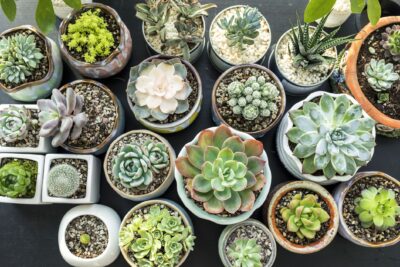
Can Succulents Imitate the Appearance of a Human Brain?

One of the fascinating aspects of nature is its ability to surprise us with its diversity and creativity. From the intricate patterns of a butterfly's wings to the delicate structure of a flower, there are countless examples of nature's artistry. But what about succulents? These plants are known for their unique and often bizarre shapes, but can they imitate the appearance of a human brain?
We will explore the world of succulents and their uncanny resemblance to the human brain. We will delve into the different types of succulents that exhibit this peculiar characteristic and examine the reasons behind their brain-like appearance. Additionally, we will discuss the cultural significance of these plants and how they have captured the imagination of gardeners and plant enthusiasts worldwide. So, if you've ever wondered about the intriguing similarities between succulents and the human brain, read on to unravel the secrets of nature's mimicry.
- Yes, by using certain types of succulents and arranging them in a specific pattern
- Succulents with branching stems can be arranged to resemble the convoluted shape of a human brain
- By using a combination of different succulent varieties with varying shades of green, you can create a more realistic brain-like appearance
- Adding small red or pink succulents can mimic the appearance of blood vessels in the brain
- Placing the succulents in a container or planter shaped like a brain can enhance the resemblance
- The use of moss or other ground coverings can add texture and depth to the arrangement, further enhancing the brain-like appearance
- Proper care and maintenance of the succulents will ensure they continue to imitate the appearance of a human brain over time
- Regularly trimming and pruning the succulents can help maintain the desired shape and form
- Placing the succulent arrangement in a well-lit area will ensure that the colors and details are more visible, enhancing the overall effect
- Experimenting with different succulent varieties, colors, and arrangements can lead to unique and creative interpretations of a human brain
- Frequently Asked Questions
Yes, by using certain types of succulents and arranging them in a specific pattern
When it comes to plants, succulents are known for their unique and intriguing appearances. With their fleshy leaves and ability to store water, they have become a popular choice for indoor and outdoor gardens. But did you know that certain types of succulents can actually imitate the appearance of a human brain?
By carefully arranging these succulents in a specific pattern, you can create a stunning display that resembles the intricate folds and curves of a human brain. This creative and unusual use of succulents has gained attention from plant enthusiasts and gardeners alike.
Types of Succulents to Use
To achieve the brain-like appearance, it is essential to choose the right succulents. Here are a few types that work particularly well:
 Discover the Stunning Resemblance: A Lettuce-Like Succulent
Discover the Stunning Resemblance: A Lettuce-Like Succulent- Haworthia cooperi: This succulent features tightly packed, fleshy leaves that grow in a rosette pattern. Its green color and translucent quality make it an ideal choice for imitating brain tissue.
- Echeveria 'Lola': With its rosette-shaped rosette and vibrant pinkish-purple color, this succulent adds a touch of beauty to the brain-like arrangement.
- Graptoveria 'Fred Ives': This succulent has a unique blend of colors, ranging from pink to lavender. Its thick leaves and compact growth make it a great option for mimicking the convoluted nature of the brain.
Arrangement and Care
Creating the brain-like arrangement requires careful consideration of the placement and arrangement of the succulents. Here are some tips to help you achieve the desired effect:
- Choose a shallow container: Select a wide, shallow container that allows the succulents to spread out and display their unique shapes.
- Start with a focal point: Place a larger succulent, such as the Haworthia cooperi, in the center of the container as the focal point of the arrangement.
- Add smaller succulents: Surround the focal point with smaller succulents, such as Echeveria 'Lola' and Graptoveria 'Fred Ives', arranging them in a way that mimics the convolutions of the brain.
- Provide proper care: Succulents require well-draining soil and indirect sunlight. Be sure to water them sparingly, allowing the soil to dry out between watering sessions.
With the right selection of succulents and a meticulous arrangement, you can create a fascinating display that resembles the intricate and awe-inspiring structure of the human brain. Whether you choose to showcase it indoors or outdoors, this brain-like succulent arrangement is sure to spark conversations and captivate the imagination of all who see it.
Succulents with branching stems can be arranged to resemble the convoluted shape of a human brain
Have you ever wondered if plants can imitate the appearance of a human brain? Well, the answer might surprise you. Succulents, with their diverse shapes and forms, have the extraordinary ability to mimic the convoluted structure of a human brain when arranged in a specific way.
Succulents are a type of plant that stores water in their leaves, stems, or roots, allowing them to thrive in arid environments. Known for their ability to retain moisture and adapt to harsh conditions, these plants have become increasingly popular in recent years as decorative elements in homes and gardens.
One particular group of succulents, those with branching stems, can be manipulated to create stunning arrangements that resemble the intricate folds and crevices of a human brain. By carefully selecting and arranging these succulents, it is possible to recreate the unique texture and shape of this vital organ.
 Exploring the Existence of Naturally Blue Succulents: Fact or Fiction?
Exploring the Existence of Naturally Blue Succulents: Fact or Fiction?How to Create a Succulent Brain Arrangement
Creating a succulent arrangement that resembles a human brain requires some creativity and attention to detail. Here is a step-by-step guide to help you bring this unique botanical art to life:
- Select your succulents: Look for succulents with branching stems, such as Echeveria, Crassula, or Sedum. Choose a variety of shapes and sizes to add depth and dimension to your arrangement.
- Prepare the container: Find a shallow container with good drainage to house your succulents. Make sure to use a well-draining soil mixture suitable for succulents.
- Arrange the succulents: Start by placing a larger succulent in the center of the container to serve as the focal point. Then, carefully position the smaller succulents around it, following the natural curves and contours of the larger plant. Arrange them in a way that mimics the convoluted structure of a human brain.
- Secure the succulents: Once you are satisfied with the arrangement, gently press the succulents into the soil to secure them in place. Be careful not to damage the delicate roots or leaves.
- Care for your succulent brain: Succulents require minimal care but still need some attention to thrive. Place your arrangement in a location with bright, indirect light and water sparingly, allowing the soil to dry out between waterings.
Creating a succulent arrangement that resembles a human brain is not only a fascinating way to showcase the beauty of nature but also a conversation starter. Whether displayed in your home or given as a unique gift, this botanical masterpiece is sure to spark curiosity and admiration.
So, the next time you come across a succulent with a branching stem, don't be afraid to let your imagination run wild and create your very own succulent brain arrangement.
By using a combination of different succulent varieties with varying shades of green, you can create a more realistic brain-like appearance
When it comes to unique and eye-catching plant arrangements, succulents have gained immense popularity in recent years. Their ability to thrive in harsh conditions and their visually appealing shapes and colors make them a favorite among plant enthusiasts. But did you know that with a little creativity, succulents can also imitate the appearance of a human brain?
By using a combination of different succulent varieties with varying shades of green, you can create a more realistic brain-like appearance. The key is to select succulents that have a similar shape and texture to different parts of the brain.
One popular choice is the Echeveria variety, which has a rosette-like shape that resembles the cerebral cortex. Its plump leaves and intricate patterns mimic the convoluted surface of the brain. Mixing these Echeveria plants with other succulents that have elongated and branching growth patterns, such as Crassula or Sedum, can represent the neuronal pathways and connections found in the brain.
It's important to choose succulents with different shades of green to add depth and realism to your brain-like arrangement. Some varieties, like the Haworthia or Aloe, have darker green leaves, while others, like the Graptopetalum or Senecio, have a lighter, almost pale green color. Combining these different shades can simulate the varied tones and textures found within the human brain.
 Air Plants vs Succulents: Differences and Similarities
Air Plants vs Succulents: Differences and SimilaritiesTo create a stunning brain-like arrangement, you can use a shallow and wide container to mimic the shape of a brain. Fill it with well-draining soil, and carefully arrange the succulents to mimic the different lobes and structures of the brain. Some gardeners even add small pebbles or rocks to represent blood vessels or other anatomical features.
Once your succulent brain is complete, it requires minimal care and maintenance. Succulents are known for their ability to store water in their leaves, making them drought-tolerant and low-maintenance plants. They thrive in bright, indirect light and require infrequent watering. With proper care, your succulent brain can be a long-lasting and fascinating addition to your plant collection.
Succulents can indeed imitate the appearance of a human brain. By carefully selecting different varieties and arranging them in a brain-like structure, you can create a unique and visually striking plant arrangement. Whether you're a plant enthusiast looking for a new challenge or a biology lover wanting to showcase your passion, the succulent brain is a creative way to merge nature and science.
Adding small red or pink succulents can mimic the appearance of blood vessels in the brain
If you're looking for a unique and eye-catching addition to your succulent collection, look no further than small red or pink succulents. These vibrant plants can actually mimic the intricate appearance of blood vessels in the human brain, creating a striking and conversation-starting display.
The resemblance between these succulents and the brain's blood vessels is truly remarkable. The twisting and branching patterns of the succulent's leaves closely resemble the complex network of veins and arteries that transport blood throughout our brains. When arranged in a carefully curated arrangement, these succulents can create a visual illusion that captivates and fascinates observers.
Not only do these succulents add a touch of intrigue and visual interest to your space, but they also serve as a great conversation starter. Guests and visitors will be drawn to the unique appearance of these succulents and will undoubtedly be curious to learn more about them.
Creating a Brain-inspired Succulent Garden: Tips and Tricks
Here are some tips and tricks to help you create a stunning brain-inspired succulent garden:
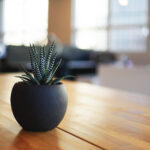 Identifying and Recognizing Common Succulent Plants Guide
Identifying and Recognizing Common Succulent Plants Guide- Choose the right succulents: Look for succulents with small red or pink leaves, as these will best mimic the appearance of blood vessels. Some popular options include Echeveria 'Lola', Sedum rubrotinctum 'Aurora', and Graptoveria 'Fred Ives'.
- Plan your arrangement: Consider the shape and size of your container when planning your succulent arrangement. Opt for a shallow dish or bowl to mimic the flat surface of the brain. Arrange the succulents in a way that resembles the natural branching patterns of blood vessels.
- Provide the right conditions: Succulents thrive in bright, indirect light and well-draining soil. Ensure your succulent garden receives adequate sunlight and water sparingly, allowing the soil to dry out between waterings.
- Accessorize: Enhance the brain-inspired theme of your succulent garden by adding decorative elements such as small figurines or rocks. These can symbolize different parts of the brain or add an extra layer of visual interest.
By following these tips and getting creative with your arrangement, you can create a stunning succulent garden that imitates the appearance of a human brain. Not only will it be a unique addition to your home or office, but it will also serve as a fascinating conversation piece.
Placing the succulents in a container or planter shaped like a brain can enhance the resemblance
When it comes to unique and eye-catching plant arrangements, succulents have become quite popular in recent years. Their ability to thrive in various conditions and their low maintenance requirements make them a favorite among plant enthusiasts. But did you know that succulents can also imitate the appearance of a human brain?
Placing succulents in a container or planter shaped like a brain can enhance the resemblance and create a striking visual effect. The intricate patterns and textures of certain succulent varieties, such as the Echeveria or Crassula species, closely resemble the convoluted surface of the human brain.
By carefully arranging different succulent species within the brain-shaped planter, you can create a miniature botanical representation of a human brain. The varying shades of green and the unique leaf shapes of these plants contribute to the overall resemblance and add an element of intrigue to any space.
Why Choose Succulents?
Succulents are an ideal choice for creating brain-like arrangements due to their adaptability and resilience. These plants have evolved to survive in arid environments, storing water in their leaves, stems, or roots, which allows them to withstand long periods of drought.
Their ability to store water also means that they require less frequent watering, making them low maintenance and perfect for busy individuals or those who may not have a green thumb. Additionally, succulents come in a wide range of shapes, sizes, and colors, allowing for endless creative possibilities when designing a brain-shaped succulent arrangement.
How to Create a Brain-Shaped Succulent Arrangement
Creating a brain-shaped succulent arrangement requires some planning and creativity. Here are a few steps to get you started:
 Are Mermaid Tail Succulents Real? A Care Guide for Enchanting Plants
Are Mermaid Tail Succulents Real? A Care Guide for Enchanting Plants- Choose a Brain-Shaped Planter: Look for a container or planter that resembles the shape of a brain. This can be a ceramic pot specifically designed for this purpose or a DIY project using materials like hypertufa or concrete.
- Select Your Succulents: Choose a variety of succulents with different colors, shapes, and textures. Opt for species that closely resemble the grooves and folds of a human brain for a more accurate representation.
- Arrange the Succulents: Begin by filling the planter with well-draining soil mix suitable for succulents. Carefully position the succulents in a way that mimics the convoluted structure of a brain, ensuring a good balance of colors and textures.
- Water and Maintain: Once your arrangement is complete, water the succulents lightly and allow the soil to dry out before watering again. Place the arrangement in a well-lit area, but avoid direct sunlight, as this can cause sunburn on the succulent leaves.
With a little patience and creativity, you can create a captivating brain-shaped succulent arrangement that will surely spark conversations and admiration. Whether you display it on a desk, a shelf, or as a centerpiece, this unique botanical creation will add a touch of whimsy to any space.
The use of moss or other ground coverings can add texture and depth to the arrangement, further enhancing the brain-like appearance
When it comes to creating a succulent arrangement that imitates the appearance of a human brain, the choice of ground coverings is crucial. One option that can truly elevate the visual effect is the use of moss or other similar materials that mimic the texture and depth of the brain's surface.
Moss is a popular choice due to its soft, lush appearance and its ability to retain moisture, which is beneficial for the overall health of the succulents. When carefully placed around the succulents, it can create a realistic brain-like texture.
In addition to moss, there are other ground coverings that can be used to enhance the brain-like appearance of the arrangement. One such option is using small pebbles or gravel to create a rocky texture. These materials can be arranged strategically to imitate the convoluted surface of the brain.
Another alternative is the use of small pieces of bark or wood chips, which can resemble the crevices and folds found on the human brain. The natural color and texture of these materials can add depth and visual interest to the arrangement.
When incorporating ground coverings into the succulent arrangement, it is important to consider the overall aesthetic and ensure that they complement the colors and shapes of the succulents used. The goal is to create a cohesive and visually striking composition that truly resembles the intricate structure of the human brain.
Whether you choose moss, pebbles, bark, or a combination of these materials, the key is to experiment and find the right balance that achieves the desired brain-like effect. Remember to consider the care requirements of the materials used and provide the necessary maintenance to keep your succulent arrangement looking its best.
 Expert Help Identifying Various Succulent Houseplants
Expert Help Identifying Various Succulent HouseplantsProper care and maintenance of the succulents will ensure they continue to imitate the appearance of a human brain over time
Whether you're a gardening enthusiast or just someone who enjoys unique and intriguing plants, succulents are a popular choice due to their low-maintenance nature and striking appearance. Among the wide variety of succulents available, some are known for their uncanny resemblance to the intricate folds and patterns of a human brain.
If you're wondering how these plants achieve such an astonishing resemblance, the secret lies in their growth patterns and unique leaf structures. The leaves of these succulents often have complex, convoluted arrangements, similar to the folds found in the human brain. This characteristic, combined with the plant's overall compact and clustered growth habit, creates a striking visual similarity.
Proper care is essential
To ensure that your succulents maintain their brain-like appearance, it's crucial to provide them with the right care and maintenance. Here are some tips to help you keep your succulents healthy and thriving:
- Light: Succulents typically thrive in bright sunlight, so it's important to place them in a location where they can receive ample light. However, be cautious not to expose them to direct, intense sunlight, as it can cause sunburn and damage the leaves.
- Watering: Succulents are adapted to arid environments, and overwatering can be detrimental to their health. Allow the soil to dry out completely between waterings, and ensure proper drainage to prevent root rot.
- Soil: Succulents prefer well-draining soil that allows excess water to escape easily. Consider using a specialized succulent or cactus mix, or modify regular potting soil with coarse sand or perlite to improve drainage.
- Temperature and Humidity: Most succulents thrive in warm temperatures and low humidity levels. Avoid exposing them to extreme cold or high humidity, as it can lead to rot and other issues.
Maintenance tips
While succulents are generally low-maintenance, a few additional steps can help ensure they maintain their brain-like appearance:
- Pruning: Regularly remove any dead or dried leaves to keep the succulent looking neat and prevent the spread of diseases.
- Fertilization: Succulents have low nutrient requirements, but occasional fertilization with a balanced, diluted fertilizer can promote healthy growth.
- Repotting: As succulents grow, they may outgrow their containers. Repotting into larger pots when necessary will allow them to continue flourishing.
By following these care and maintenance guidelines, you can ensure that your succulents not only imitate the appearance of a human brain but also remain healthy and vibrant in the long run. So go ahead, add these fascinating plants to your collection, and enjoy the intriguing conversation starters they provide!
Regularly trimming and pruning the succulents can help maintain the desired shape and form
Succulents are known for their unique and fascinating shapes, which often resemble various objects found in nature. One of the most intriguing resemblances is that of a human brain. Yes, you read it right! Some succulents have leaves that imitate the convoluted appearance of the human brain.
 Exploring the Tube-Shaped Leaves of Succulents: A Guide
Exploring the Tube-Shaped Leaves of Succulents: A GuideRegularly trimming and pruning the succulents can help maintain the desired shape and form. By selectively removing stems and leaves, you can accentuate the brain-like structure of these plants. However, it is important to note that not all succulents naturally resemble a human brain, so choosing the right species is crucial.
Here are some succulent varieties that can imitate the appearance of a human brain:
- Echeveria 'Lola': This succulent has tightly packed, fleshy leaves that curve inward, creating a brain-like appearance. Its rosette shape adds to the resemblance.
- Haworthia cooperi: The distinct ridges and translucent leaves of this succulent give it a striking resemblance to a brain. Its compact size makes it an ideal choice for indoor gardens.
- Sempervivum arachnoideum: Also known as "cobweb houseleek," this succulent features a unique web-like pattern on its leaves, resembling the intricate folds of a brain.
While these succulents may not be an exact replica of a human brain, their resemblance adds an interesting and whimsical touch to any garden or indoor space. It's important to provide these plants with proper care, including adequate sunlight, well-draining soil, and occasional watering.
So, if you're looking to add a touch of curiosity and intrigue to your succulent collection, consider incorporating these brain-like varieties. They will surely spark conversations and captivate the imagination of anyone who sets eyes on them.
Placing the succulent arrangement in a well-lit area will ensure that the colors and details are more visible, enhancing the overall effect
When it comes to unique and eye-catching succulent arrangements, there are countless creative possibilities. One particularly intriguing concept is the idea of succulents imitating the appearance of a human brain. This captivating arrangement is not only visually striking but also sparks curiosity and fascination.
To achieve this brain-like appearance, the selection of succulents plays a crucial role. Opt for varieties with interesting textures, shapes, and colors. Some popular choices include Echeveria 'Lola', Crassula 'Buddha's Temple', and Senecio 'String of Pearls'. These succulents possess intricate patterns, bulbous shapes, and vibrant hues that closely resemble the convoluted structure of a human brain.
Creating the Arrangement
Before assembling your succulent brain arrangement, make sure you have all the necessary materials on hand. You will need a shallow container or a pot with good drainage, suitable soil mix, and the selected succulents.
 Identifying the Succulent with Jagged-Edged Leaves: A Guide
Identifying the Succulent with Jagged-Edged Leaves: A GuideStart by filling the container with the appropriate soil mix, ensuring it is well-draining to prevent excessive moisture retention. This is crucial for the health and longevity of your succulents. You can use a cactus or succulent-specific soil mix or create your own by combining regular potting soil with perlite or coarse sand.
Once the container is prepared, carefully select and place the succulents in a way that mimics the convolutions and contours of a brain. Consider the varying heights, shapes, and colors of the succulents to create an organic and realistic effect. Placing the taller succulents towards the center and the smaller ones towards the edges can help achieve a more balanced and visually appealing arrangement.
It is essential to ensure that the succulents have enough space to grow and thrive. Avoid overcrowding them, as this can lead to poor air circulation and potential health issues for the plants. Leave some room between each succulent to allow for future growth.
Caring for Your Succulent Brain
Proper care is crucial to maintain the health and vibrancy of your succulent brain arrangement. Succulents are known for their drought-tolerant nature, making them relatively low-maintenance; however, they still require attention and care.
- Light: Place the succulent arrangement in a well-lit area to ensure that the colors and details are more visible, enhancing the overall effect. Succulents thrive in bright, indirect sunlight, so a spot near a window or a well-lit room is ideal.
- Watering: Succulents prefer infrequent watering. Allow the soil to dry out completely between waterings to prevent overwatering, which can lead to root rot. The frequency of watering will depend on various factors such as the climate, humidity, and the specific succulent varieties used in your arrangement.
- Temperature and Humidity: Succulents generally prefer warm and dry conditions. They can tolerate a wide range of temperatures but may suffer in extreme cold or heat. Aim to keep the room temperature between 60°F (15°C) and 80°F (27°C) for optimal growth.
- Propagation: If you wish to expand your succulent brain arrangement or propagate individual succulents, you can easily do so through stem or leaf cuttings. Allow the cuttings to callus for a day or two before planting them in well-draining soil.
By following these care guidelines and providing the necessary attention, your succulent brain arrangement can thrive and continue to captivate with its unique and intriguing appearance. Not only will it serve as a conversation starter, but it will also showcase the beauty and versatility of succulents in a truly imaginative way.
Experimenting with different succulent varieties, colors, and arrangements can lead to unique and creative interpretations of a human brain
When it comes to succulents, the possibilities for creativity are endless. From their unique shapes and colors to their low-maintenance nature, these plants have become a popular choice for both indoor and outdoor gardens. But did you know that with a little bit of imagination and the right combination of succulent varieties, you can create an arrangement that imitates the appearance of a human brain?
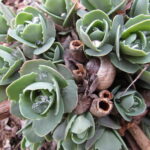 Succulent Types: Identifying with Pictures for Easy Identification
Succulent Types: Identifying with Pictures for Easy IdentificationWhy succulents?
Succulents are known for their ability to store water in their leaves, stems, and roots, allowing them to thrive in arid climates. This unique feature gives succulents their plump and fleshy appearance, making them the perfect candidates for creating brain-like structures. Their diverse range of shapes, sizes, and colors also adds to the overall realism of the arrangement.
Choosing the right succulent varieties
When it comes to imitating the appearance of a human brain, it's important to select succulent varieties that closely resemble the different parts of the brain. For example, Echeveria 'Lola' with its rosette-shaped leaves can mimic the folds and creases on the surface of the brain. Sedum rubrotinctum, commonly known as "Jelly Bean" succulent, can imitate the small, rounded structures found in certain areas of the brain.
Playing with colors
Color plays a crucial role in creating a realistic brain-like arrangement. Opt for succulents with shades of green, purple, and gray to mimic the natural hues of the brain. You can also experiment with different textures and patterns, such as variegated or striped leaves, to add depth and complexity to your arrangement.
Arranging the succulents
 Are Aloe Plants Succulents?
Are Aloe Plants Succulents?Once you've gathered the right succulent varieties, it's time to arrange them in a way that imitates the intricate structure of the brain. Start by placing the larger succulents in the center, representing the main lobes of the brain. Then, gradually add smaller succulents around them, mimicking the branching pathways and connections within the brain. Don't be afraid to play around with different angles and orientations to achieve the desired effect.
Caring for your succulent brain
Just like any other succulent, your brain-inspired arrangement requires minimal care. Make sure to provide it with well-draining soil, moderate sunlight, and water sparingly. Succulents thrive in dry conditions, so be mindful not to overwater them. With proper care, your succulent brain will continue to grow and flourish, adding a unique touch to your home or garden.
So, next time you're looking for a creative project involving succulents, why not try imitating the appearance of a human brain? With the right selection of succulent varieties, colors, and arrangements, you can create a stunning and thought-provoking piece of living art.
Frequently Asked Questions
1. Can succulents imitate the appearance of a human brain?
No, succulents cannot imitate the appearance of a human brain. They come in various shapes and colors, but none resemble a brain.
2. How often should I water my succulents?
Succulents generally require infrequent watering. It is best to water them when the soil is completely dry, usually every 1-2 weeks.
3. Do succulents need direct sunlight?
Most succulents thrive in bright, indirect sunlight. However, some species can tolerate direct sunlight, but it's important to monitor for signs of sunburn.
4. Can I grow succulents indoors?
Absolutely! Many succulents can be grown indoors. Just make sure they receive sufficient light and have well-draining soil to prevent root rot.
If you want to read more articles similar to Can Succulents Imitate the Appearance of a Human Brain?, you can visit the Identification category.


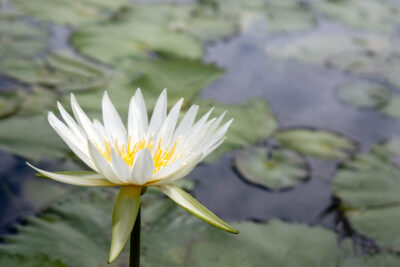

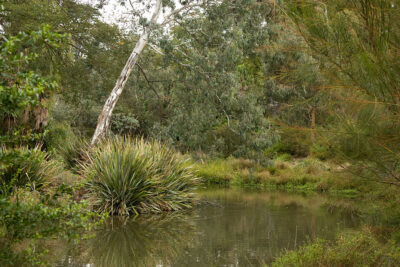
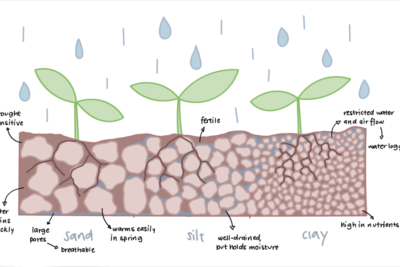
You Must Read